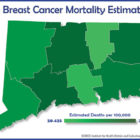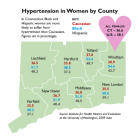Disparities
Medicaid Expansion Helped Reduce Disparities In Cancer Care
|
The racial disparity between white and black cancer patients in accessing timely treatments has virtually disappeared in states where Medicaid expanded under the Affordable Care Act (ACA), according to a new study. Yale Cancer Center researchers analyzed more than 30,000 health records and found that, prior to Medicaid expansion, black adults with advanced or metastatic cancer were 4.8 percentage points less likely than white adults to begin treatments within 30 days of being diagnosed. But in states where Medicaid was expanded, in 2014 or later, the percentage of black patients getting timely treatment rose from 43.5 percent to 49.6 percent. There also was a small improvement in expansion states among white patients receiving timely treatment – from 48.3 percent to 50.3 percent – bringing the post-expansion difference between the two racial groups to less than one percentage point. “Our results suggest that Medicaid expansion led to improved health equity,” said study author Amy Davidoff, a senior research scientist at Yale School of Public Health and in Yale Cancer Center’s Cancer Outcomes, Public Policy, and Effectiveness Research Center (COPPER).





